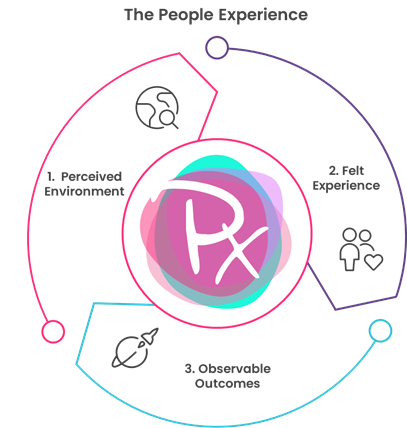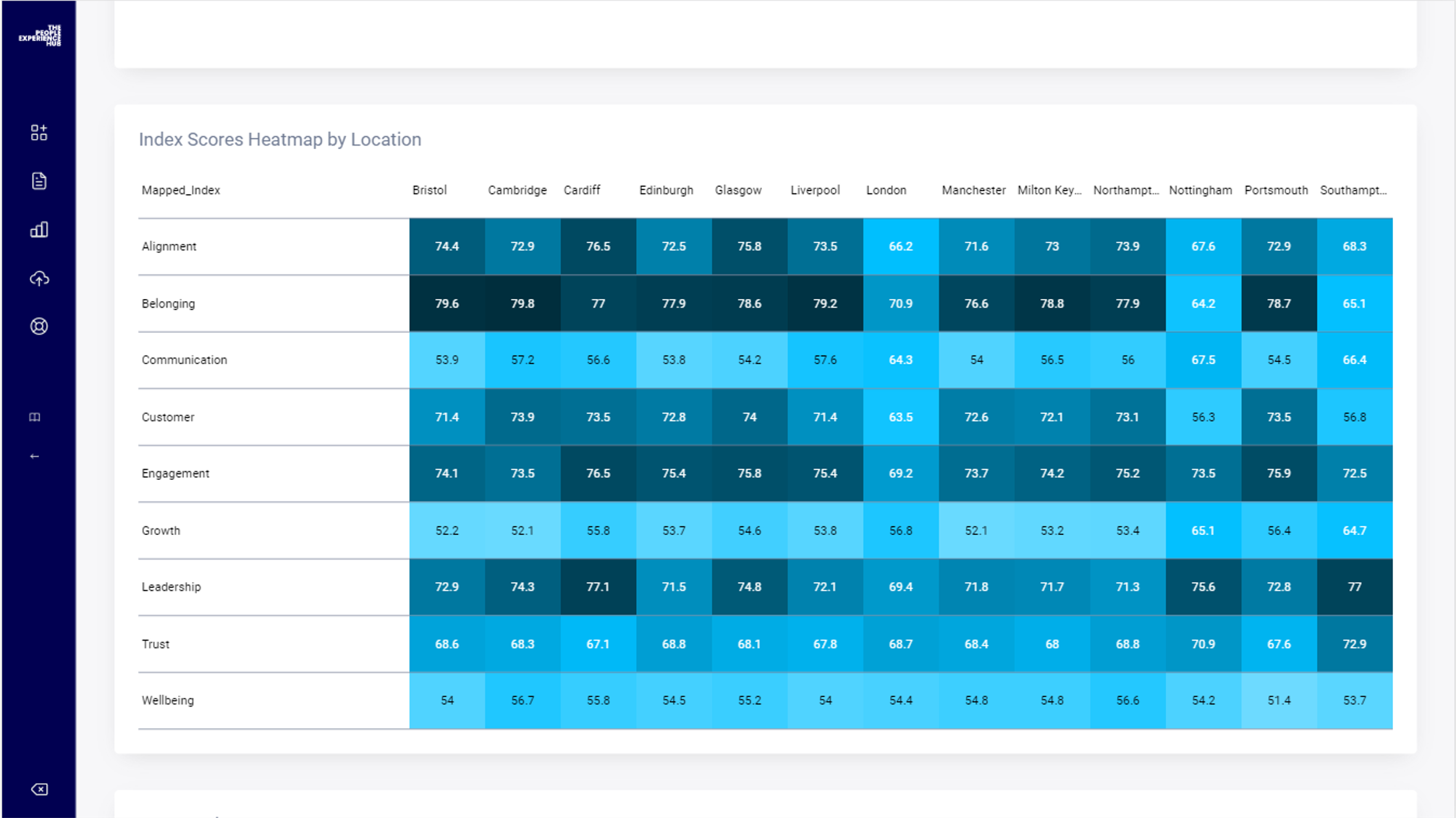Navigating the People Experience: A Framework for Engagement
Building a great people experience means navigating quite a lot of complexity, which is often not helped by an HR landscape that is cluttered with concepts and 'solutions'. Our framework is designed to help make sense of it all..
As a company we’re dedicated to transforming the experience of people at work. It’s a lofty purpose, and we’re aware that behind the statement there’s an awful lot of complexity. It’s important, therefore, for us to help people professionals and business leaders to navigate that complexity – and this is our attempt to do that.
It''s always risky that when you try and simplify something that’s complex, like the people experience, you’ll oversimplify it. That’s something I was very conscious of when I set out to create our framework. But we had come to realise that it was necessary. One of the most important attributes that all of our employee feedback tools have is flexibility, and while our clients valued it, they would often ask, “but what’s your model?”
In some respects this was the paradox of choice in effect – if you can measure whatever you want, where do you start? So we developed our own framework, and while we most often use it to design bespoke employee surveys and better understand the people experience, we believe it’s a useful starting point for designing it too.
What do we mean by the People Experience (PX)?
We use ‘people experience’ as a holistic phrase to mean all aspects of work that influence how people feel, and the implications of those feelings, for example on performance or wellbeing.
Vs Employee Experience (EX)
We’re wary of the term Employee Experience, even though we sometimes use it ourselves. We prefer ‘people experience’ for a few reasons.
The first of is that work is increasingly being done by people that aren’t necessarily ‘employees’ in the ‘gig economy’.
It can also conjure an image of employee and management as somehow separate. People are people, at every level of the organisation.
We’re also aware that some people have a preconceived idea of either EX as predominantly a design activity (like UX), or Employee Experience as HR process.
Vs Employee Engagement
We also have to think about relationship between the people experience and employee engagement. Employee Engagement is a loaded term that can be taken as a psychological state, a process, a trait or an organisational practice; and the lack of consensus and alignment between academic research and practice doesn’t do anything to reduce the potential for confusion.
Indeed, the CIPD concluded that employee engagement is best thought of as a broad ‘umbrella’ concept related to people strategy. Under this umbrella, you can put more specific constructs (such as work engagement) that have a stronger foundation in theory and research.
That, in many respects, is how we see the people experience, and while it supports our goal of flexibility we felt that more structure would help us and our clients.
Our Three-Level People Experience Framework
When reviewing the academic research alongside our previous client surveys, it was clear that there was opportunity to create a simple structure that recognises the ‘process’ of engagement. That is, there are stimuli in the environment, we intepret those as individuals, which influences how we feel, and in turn influences our motivation or intention to behave in a certain way.

Perceived Environment
Our framework starts with the idea that there is a relatively objective ‘reality’ of the work environment that different people might describe in similar ways. In other words, if processes are inefficient, people management practices are dodgy and the workplace is a bit dingy, these would be perceptions that might be shared quite widely.
This is the first level in our framework, the Perceived Environment.
Felt Experience
Just because we perceive broadly the same things, however, does not mean that we experience them in the same way.
We both might have the same objectives, cascaded in the same way by the same manager, for example. I might be really happy with the clarity it provides me, and you might that you haven’t had enough of a say in them. In our team we might be treated in exactly the same way, but I might feel like I belong while you struggle to fit in.
In other words, our Felt Experience is where you and I, as individuals, bring our own needs, history, motivations and personalities into the mix and, to quote Anaïs Nin:
“We don’t see things as they are; we see them as we are”.
Into this pot, based on our research, we’ve tentatively placed: Belonging, Purpose, (Emotional) Connection, Enjoyment, Autonomy and Growth, as a range of ‘feelings’* that we think that people can relate to. But we keep an open mind and I’m sure these will evolve as we continue to use them and test our data.
(*I’d love to use emotions more in our work and I’m sure we will, but that’s for another time.)
Observable Outcomes
The final level is concerned with outcome - the implications of all this stuff, what it means for your business or people strategy. In this pot we can put what matters most to the client; the motivations, attitudes or behaviours that they want to see or use to define success, or execute their vision, in their own context.
As a starting point, we can put things like employee engagement (particularly what we might describe as emotional or behavioural engagement), but it’s worth looking beyond engagement to consider what’s really important to your business. Yes, we all want engaged people but what about wellbeing / burnout, creativity, embracing change, or participation in sustainability, collaboration or even performance metrics as other examples of outcomes?
So what does this framework help with?
We use the framework to support survey design, and then development of insights.

First, it helps us to guide a conversation about what’s important to our clients, and therefore what we should measure. This is important when running an employee survey with a limited number of questions.
Separating the different levels rather than running a ‘flat’ survey – for example separating questions about diversity practices from feelings of belonging and actual behaviours – allows us to perform more sophisticated analysis and develop deeper insights.
However, the framework doesn’t have to be used in measurement.
It can support a structured conversation about your people experience with stakeholders, perhaps as part of focus groups, and enable more qualitative insights.
It can also support experience design, prompting different questions and answers about different aspects of the people experience, and their relevance or importance to your organisation.
